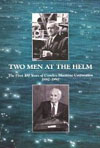Merchant Ships in Port
° Vessels & Rigging ° Clippers ° Steamships ° Lines ° Builders ° Shipwrecks
Please note: Merchant ship arrivals are included to give an idea of the volume and type of goods into early San Francisco. If you had the money, you could have anything your heart desired. Listings are by no means complete; names of passengers on these vessels are often unavailable.
Click here for passenger ship arrivals.
° 1846-1847 ° 1848 ° 1849 ° 1850 ° 1851 ° 1852 ° 1853 ° 1854 ° 1855 ° 1856 ° 1858 ° 1860-1862 ° 1863 ° 1864 ° 1865 ° 1868 ° 1870s ° 1880s ° 1890s
1848, San Francisco
JANUARY
- January 7, 1848: Brig Lady Adams, Hanna (or Hannah), from Baltimore, Capt. Rudd, U.S.S. Dale, Purser W. A. Christian, F. Dickinson U.S.N. and L. Coffin, J. Hobson and J. Lick.
- January 8, 1848, California Star, San Francisco
C.C. Smith & Co., New Helvetia
have just received and offer for sale, a New and General Assortment of Dry Goods and Groceries for which they will receive in exchange Wheat, Corn, Rye, Barley, Oats, Horses and Mules, Beaver and Otter Skins, Pork, Butter and Cheese, Lard, Tallow, Hides, etc.
New Helvetia, January 8, 1848.
- January 19, 1848, Californian, San Francisco: January 17, 1848, Arrived port of San Francisco Brig Malek Adhel, Hall, from Monterey. (The brig was built for Mexico by William H. Webb, New York, 1840. She was captured at Mazatlan, Mexico, 6 September 1846 by Warren, Comdr. Joseph B. Hull in command. She was taken into the U.S. Navy and placed in service under the command of Lt. James F. Schenck. During the remainder of the war she operated along the lower coast of California. She was sold in 1848.)
- January 26, 1848, Californian.
BEE HIVE.
The proprietors of the above establishment have received per recent arrivals, and now landing, TEN THOUSAND pounds Light Brown Havana SUGAR, they would particularly call the attention of their patrons to this article, being a clean bright Sugar and at a low price.
100 boxes Muscatel Rasins of a splendid quality.
Mackerel and Cod Fish, in quantities to suit purchasers.
Coffe, Tea, Chocolate and Rice.
1,000 pieces Fancy Prints, elegant styles and superior Fabrics.A few real Norwich Shawls, in which the most delicate colors are beautifully blended. Mandarine Satins and Silks will be sold low to close a consignment being well adapted for evening dresses.
To particularize the vast quantity of goods now landing, and daily expected at this establishment would fill a volume, they would only therefore impress upon the public the necessity of an early call.
FEBRUARY
- February 9, 1848: American brig Eagle, Lovett, 46 days from Canton. Passengers: Mr. and Mrs. C. V. Gillespie, and Mr. Cunningha.
MARCH
- March 16, 1848: Brig Sabine, Vincent, 167 days from Boston. Cargo general merchandize. Passengers: From Boston, Messrs Long and Badger, Mr. Holbrook, supercargo.
- March 19, 1848: Brigantine Providence, Hinkley, 17 days from Sandwich Islands. Cargo general merchandise. Passengers: Mr. Tobin and lady, Messrs Wilson, Kittle Leait, Melville, Latham, Dreskill and Murray.
MAY
- May 24, Californian: FOR THE SANDWICH ISLANDS! The Hawaiian schooner Mary, Belcham, Master, will sail for Honolulu in a few days. For freight or passage, having good accommodations, apply to the Master on board.
AUGUST
- August 21: Hawaiian Brig Julian, Moran, for Honolulu
SEPTEMBER
- September 2, 1848: Hawaiian schooner Julian for San Francisco.
George Allan departed Honolulu for San Francisco on the schooner Julian with a shipment of Company goods. The Julian, of Hawaiian registry, was chartered by W. Skinner and Co. of Honolulu, who made cargo space available to the Hudson's Bay Company. Allan's October 7 letter to the Honolulu Agency reported the successful sale of the Company's invoice of merchandise and remitted the proceeds, amounting to about $6,720 in gold dust. (Library. Manoa, Hawaii.) - September 16, 1848, Californian
ARRIVALS. -- Our town is completely crowded with new comers, thirty five having arrived in one vessel, thirty in another and nineteen in another, while every vessel that comes bring more or less. Verily, gold is a powerful magnet. Among the passengers by the "Huntress," from New York, we notice Capt. Rufus Ingalls, of the Quarter Master's Department, Lieut. Norton, 1st Regt. N. Y. Volunteers, recently disbanded, and Mr. J. A. Sutter, Jr., son of the enterprising proprietor John Augustus Sutter of New Helvetia. The number of people in town renders all kind of lodging in great demand, and it is a moderate assertion to say that fifty persons are nightly without the comfort of a roof to sleep under.
OCTOBER
- October 23, 1848, Californian: Sailed: Schooner Julian, Moran, for Honolulu. 18 passengers. Passenger list not located. (J. Fuchs noted as being on board. - genform)
- October 26, 1848: Schr Kamehameha III, Carter, 26 days from Honolulu, with passengers. Reports the Haalilio, Singapora, S. S. and the Honolulu to sail soon for this port.
- October 28, 1848: Brigantine S. S., Taylor, 22 days from Honolulu with 40 passengers.
- October 29, 1848: Schooner Honolulu, Newell, 18 days from Honolulu with passengers.
NOVEMBER
- November 11, 1848, Californian: For several days past we have had unusually foggy weather, which no doubt prevents the arrival of the Southampton. Bark Undene (also spelled Undine), Andrews, Valparaiso, 47 days; cargo general merchandise. The Undine left New York in July last, got ashore with a cargo of merchandise for this place and Oregon, got on shore in the straits of Magellan; threw overboard part of the cargo, got off, and went to Valparaiso, where she was condemned, and the vessel and cargo sold.
- November 11, 1848: Chilean ship Verginia 58 days from Valparaiso. Cargo general merchandize and 60 passengers.
- November 12, 1848: The Hawaiian schooner Julian, Captain Moran, arrived at the Port of Honolulu 16 days fom San Francisco.
DECEMBER
- December 12, 1848: Hawaiian schooner Julian, Captain Moran, 16 days from San Francisco.
- December 16, 1848: Chilean brigantine Valadora. 63 days from Valparaiso with flour &c. to Cross, Hobson & Co.
- December 16th: California Star & Californian, December 16, 1848: Just as our paper was going to press the Hawaiian schooner Julian from Honolulu hove in sight, beating up the bay. Hawaiian schooner Julian, Moran master, with an assorted cargo to J. Bawden & Co.
- December 19: American brig Malek Adhel, Hall master, 25 days from Mazatlan, with blankets and other Mexican manufactures to R. A. Parker. Reports the Cayuga and Swallow for this port soon.
Entrance to the Golden Gate
Albert Bierstadt, 1872 California Star & Californian, December 2, 1848  Our Consuls must be cautioned not to certify Invoices of Merchandize which, on arrival here, contravene the U. S. Revenue laws. Two instances have occurred this week, of our Collector making seizures, or having it in his power to do so, in consequence of our Consuls not being well advised relative to our Revenue laws. Traders to this port must be more circumspect, particularly not to have their vessels less than thirty tons; not to bring more passengers on their vessels than the law allows, and not to import liquors, wine, ale, and porter, in small packages for as soon as we have the Revenue officers from Washington, who will be on the look out for spoils, any infringement of the laws will be strictly enforced, and appeals to any authority short of the U.S. District Court, or the Secretary of the Treasury will be of no avail. The first U.S. District Attorney and Marshal for this District will have an abundance of business, if parties importing goods here do not inform themselves better in reference to the U. S. Revenue laws. |
The Annals of San Francisco
Frank Soule, John H. Gihon, Jim Nisbet. 1855.
Written by three journalists who were witnesses to and participants in the extraordinary events they describe. The Annals of San Francisco is both an essential record for historians and a fascinating narrative for general readers. Over 100 historical engravings are included. Partial Contents: Expeditions of Viscaino; Conduct of the Fathers towards the natives; Pious Fund of California; Colonel John C. Fremont; Insurrection of the Californians; Description of the Golden Gate; The Presidio of San Francisco; Removal of the Hudson's Bay Company; Resolutions concerning gambling; General Effects of the Gold Discoveries; Third Great Fire; Immigration diminished; The Chinese in California; Clipper Ships; Increase of population; and Commercial depression.

Two Men at the Helm: The First 100 Years of Crowley Maritime Corporation, 1892-1992
Jean Gilbertson.
Crowley Maritime started as a one-man operation, with nothing more than one 18-foot Whitehall rowboat to provide transportation of personnel and stores to ships anchored on San Francisco Bay. In the mid-1800s, the business was incorporated under the name Thomas Crowley and Brothers. Withing a few years, services grew to include bay towing and ship-assist services. By the turn of the century, Crowley's expansion continued by operating small barges to transport steel to Oakland and barrels of oil, ice, and other supplies to ships in San Francisco Bay. In July 1902, the San Francisco Call reported "The new launch Guide, owned by Thomas Crowley & Bros., made her first trip yesterday to the Farallon Islands and carried out her builders' highest anticipations. By 1912, Crowley had built a marine railway, dock and woodworking mill. Growth continues to this day.
A History of California
Franklin Tuthill.
This comprehensive 19th century history of California, from its early times up to the Gold Rush was written "because there seemed to be a demand for a History of California which should sketch the main events of the country from its discovery to the present time. Beginning with Spanish priests, who enslaved indigenous tribes, millions rushed in and claimed the land after the Gold Rush. The material is abundant: log-books of ancient mariners; archives of the Government while the territory was under Spanish or Mexican rule; official reports and Congressional documents about the transfer to the United States; files of newspapers; scores of books of intelligent travellers; the oral evidence of natives, and early immigrants." These sources were the base materials for this publication.
When America First Met China:
An Exotic History of Tea, Drugs, and Money in the Age of Sail
Eric Jay Dolin.

to the The Glorious Reign of Emperor Qianlong: Splendors of China's Forbidden City, who considered foreigners inferior beings -- this saga of pirates and politicians, coolies and concubines becomes a must-read for any fan of Nathaniel Philbrick's Mayflower
or Mark Kurlansky's Cod.
Two maps, 16 pages of color, 83 black-and-white illustrations.
Atlantis: The Antediluvian World
Ignatius Donnelly.
The author and politician Ignatius Donnelly was born in Philadelphia on 3 November 1831. He was educated in the public schools of his native city, studied law, was admitted to the bar, and practiced. He went to Minnesota in 1857, was elected lieutenant governor in 1859, and again in 1861, and was then elected to Congress as a Republican, serving from 7 December 1863 until 3 March 1869. Besides doing journalistic work he has written an Essay on the Sonnets of Shakespeare, and his most enduring work, Atlantis, the Antediluvian World (New York, 1882), in which he attempts to demonstrate that there once existed in the Atlantic Ocean, opposite the straits of Gibraltar, a large island, known to the ancients as "Atlantis"; and Ragnarok (1883), in which he tries to prove that the deposits of clay, gravel, and decomposed rocks, characteristic of the drift age, were the result of contact between the earth and a comet.









 Copyright ~ 1998-2018.
Copyright ~ 1998-2018. 